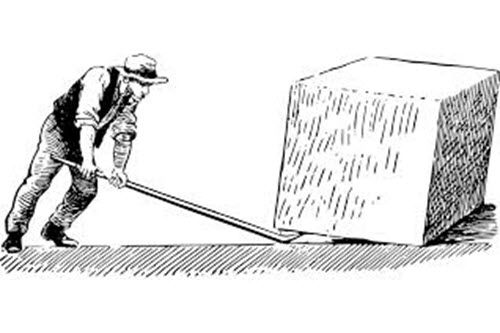March 2021
These Drivers Quantify the Time and Money You Get from Your Practice
Time and money. These are two things we generally want more of. Because they are generally two things, we think we don’t have enough of. If you want more time and money than you are currently getting out of your practice, this QuickRead deconstruction is for you.
Time and money. These are two things we generally want more of. Because they are generally two things we think we don’t have enough of. If you want more time and money than you are currently getting out of your practice, this QuickRead deconstruction is for you.
Writing for CPA Trendlines a while back, Rick Telberg said: “The professional services industry is a lifestyle sector. Experts must decide how much they want to earn and how much they want to work. Then they shape their business around that.”
I bet you never thought of yourself having a job in the “lifestyle sector”! But if you think about your ability to micromanage your revenue potential, it is something not found in many other industries.
So with that in mind, what levers can you control to get the time and money you want out of your BVFLS practice? Turns out, there are only five levers you need to push—assuming you do not, will not, or think you cannot adopt a value pricing model. Here is a starting point:
$300 per hour
x 5 hours per day
x 5 days per week
x 4 weeks per month
x 10 months per year
$300,000 per year
I know y’all are capable of doing the multiplication, so let’s focus on the two key drivers: hourly rate and hours worked.
#1 – Hourly Rate: The first lever is your hourly rate. $300 per hour may be low for some and high for others. Adjust accordingly.
For example, you may think your hourly rate is largely a function of the market you’re in. That’s true to some extent, especially if you’re a generalist. But if you’re a specialist, your hourly rate is more likely to be a function of the leadership position you’ve staked out in your practice area regardless of where you live. And if your type of client exists nationwide, so does your market.
#2 – Hours Worked: My model assumes 1,000 chargeable hours, and I think $300,000 in billings is downright respectable. If you want/need more money, but don’t feel you can’t raise your billing rate, you’ll need to work more on how/where you spend your time.
Because it is time, not money, that more easily slips through our fingers. How do I know that? Personal experience. And the cumulative results of surveys I’ve done saying most appraisers generate 1,000–1,500 chargeable hours per year while working 2,000–2,500 total hours per year. Where is that delta of 1,000 hours per year going? Because at, say, a 50-hour workweek, that’s 20 freaking weeks of time … or more than one-third of a year. Going where?! There’s only so much admin, CPE, marketing, and professional reading that needs to be done.
My hunch (because no one will admit this) is that the delta arises from inefficiencies and ineffectiveness (and procrastination), some of which may be attributable to having a generalist practice. For example, the more you generalize, the more non-billable time you spend learning about a new practice area or industry niche that you are currently unfamiliar with.
Because time IS more important than money, the four of the five drivers in my model are a function of time: chargeable hours per day, days per week, weeks per month, and months per year. The numbers, of course, are averages: an average of five chargeable hours per day; an average of five working days per week, etc.
But here’s what those four time levers mean, on average:
- There are three hours a day, five days a week, four weeks a month, 10 months a year (= 600 hours) to do your admin, CPE, marketing, and professional reading.
- You don’t need to work 10–12 hours a day unless you want to work a shorter week.
- You shouldn’t have to work weekends.
- There is one free week every quarter to relax and recharge.
- There are two months a year to develop a new niche, create that keynote presentation, write that book, or take more/longer vacations.
Time and money. What would you do with more of each?
What do you think?
Everyone has a different idea of what a successful practice is. The practice you want is personal because it is based on what “successful” means to you. I help practitioners focus on the strategies, tactics, tools, and tech to build/grow/scale their versions of successful practices. If you want some help with that, e-mail me at rod@rodburkert.com.


